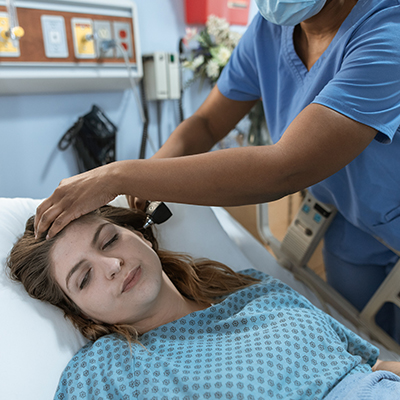A medical surge is a sudden increase in demand for healthcare services that overwhelms the ability of an organization to keep up with patient needs. Medical surges are triggered at any time by incidents like natural disasters, mass casualty incidents, and infectious disease outbreaks. The potential for such occurrences is always present, so it’s important to prepare so you can handle them when they do happen. This way, a public health emergency doesn’t become a humanitarian crisis.
Overtaking Patient Care Capacity
A medical surge can overwhelm the emergency response capabilities of healthcare organizations — especially if they have limited personnel, supplies, and space to accommodate the number of patients that need care. When a crisis or natural disaster strikes, it’s likely that many people will require urgent and immediate health care. This situation can quickly exhaust a local jurisdiction’s care system’s resources (such as beds and health professionals), leading to long waits for treatment or even an inability to receive care at all.
Medical surge capacity is defined as “the ability of a healthcare system to respond effectively when demand exceeds normal levels.” A surge occurs when there is an increase in demand for health care services due to unforeseen circumstances (such as large-scale disasters), seasonal fluctuations (like flu season), or other unexpected events.
Causes of Medical Surge
The type of disaster that leads to a medical surge will determine the response planning and the type of public health preparedness. For example, if an area is at risk of a natural disaster like an earthquake or hurricane, a surge plan must include generators in case of a power outage. If there’s a mass casualty incident in a community (such as an active shooter situation), emergency medical services and healthcare facilities must be ready for multiple traumatic injuries. An infectious disease outbreak, such as the recent pandemic, has demonstrated that emergency preparedness should include additional resources like a stockpile of personal protective equipment (PPE) to protect hospital staff.
Health Care Providers May Triage Patients
During a medical surge where there are more patients than resources available, health care providers must triage patient needs. The word “triage” comes from the French verb “to sort out” and refers to the process of prioritizing patients based on what they need. This is important because in an emergency or disaster situation with limited capacity, providers will not be able to provide care to everyone at once; they have to choose who gets treatment first.
Every hospital in America is governed by three levels of standards of care: conventional, contingency, and crisis standards of care. During a medical surge, crisis standards of care are implemented. In addition to having enough resources for all patients (such as beds or operating rooms), medical staff must also have enough staff members available who can perform medical evaluations, procedures, and tests properly.
Other Inpatient Facilities May Have to Meet Medical Needs
Inpatient facilities such as acute care hospitals or long-term care facilities may experience increased demand for inpatient beds during a medical surge. Healthcare coalitions may have to redirect patients to their other available facilities for treatment, such as pediatric hospitals or behavioral health clinics. Ambulatory care facilities such as emergency departments (EDs) or outpatient clinics may also experience an increase in patient volume during a medical surge.
EDs are the first point of contact for most patients seeking medical care, including those with non-life-threatening injuries or illnesses. They are not designed to treat patients with life-threatening injuries or illnesses; those patients should immediately transfer to higher levels of care.
Hospital Preparedness Starts With the Management System
A key part of preparing for a medical surge is developing policies and procedures for allocating resources across multiple functions to ensure the best possible patient outcome. This can include:
- Communications: Create a communications plan that informs staff members and keeps them updated on what’s happening at the hospital.
- Staffing: A staffing plan that ensures all critical department heads are on site and available in case of an emergency or surge situation.
- Supply availability: Make sure adequate supplies are available.
- Training: Ensure that all staff members are trained in CPR/AED before an emergency occurs, as well as ways to keep themselves safe (such as wearing eye protection).
Depletion of Resources During a Medical Surge
Here are some suggestions from Penn Care to improve medical surge capability:
-
- Stock up on supplies like gloves, masks, gowns, medications, and blood products.
- Have a mass oxygen system ready.
- Keep emergency generators ready in case power goes out.
- Have an emergency medical trailer to quickly increase capacity.
- Make sure all equipment is working properly before any large influx of patients arrive at the hospital (if possible).
Stock Up for Emergency Management
When preparing for a medical surge, it’s important to know your available resources. This can help you make decisions about staffing levels or other actions that will reduce the impact of a surge on your organization. By keeping these tips in mind, you can ensure that your organization is prepared when disaster strikes.
Whether it’s a hospital or a public health agency, your emergency operation or disaster response plan will be complete with supplies from Penn Care.



